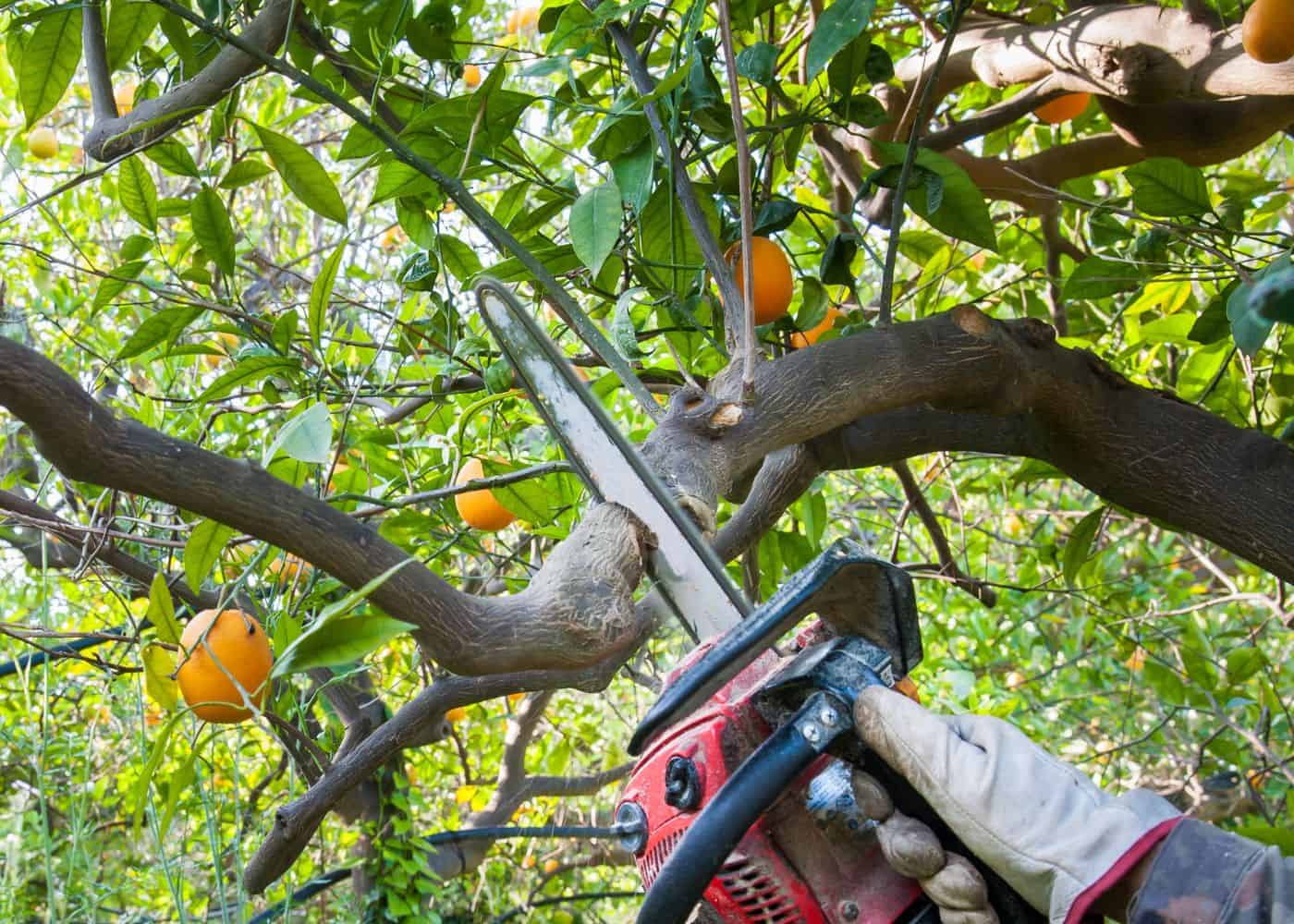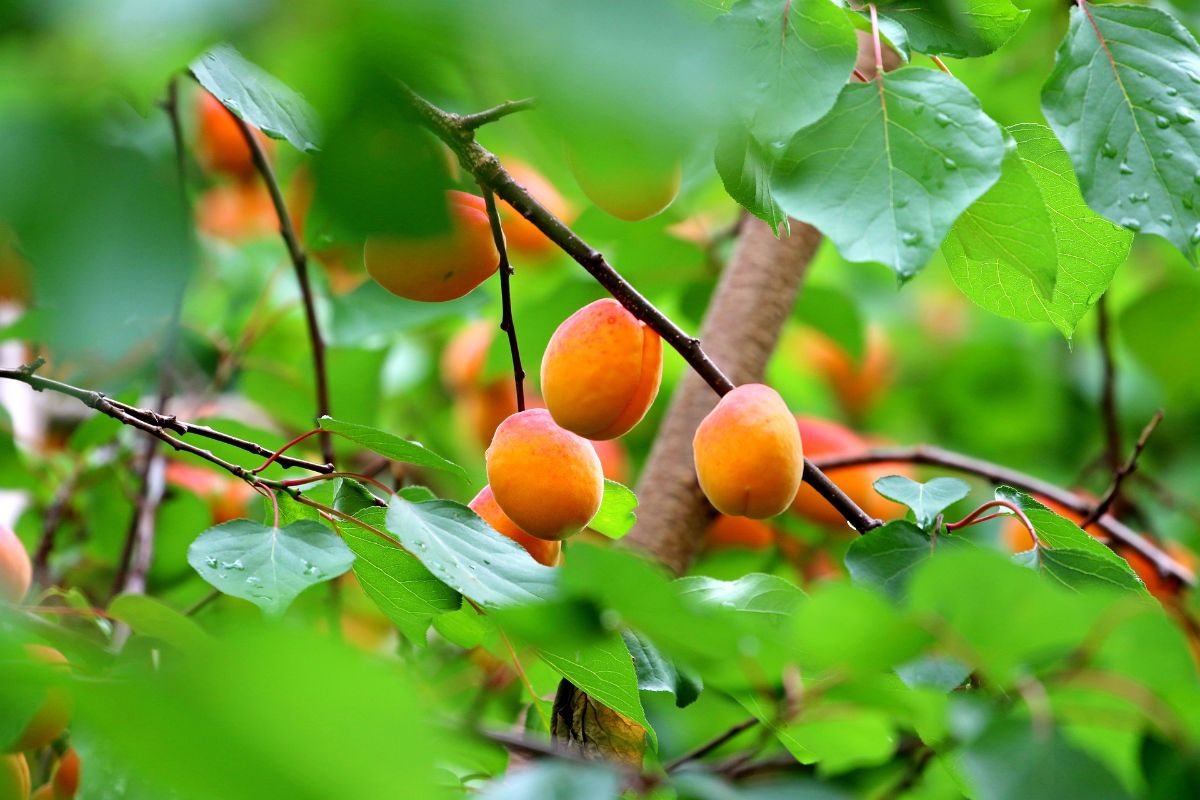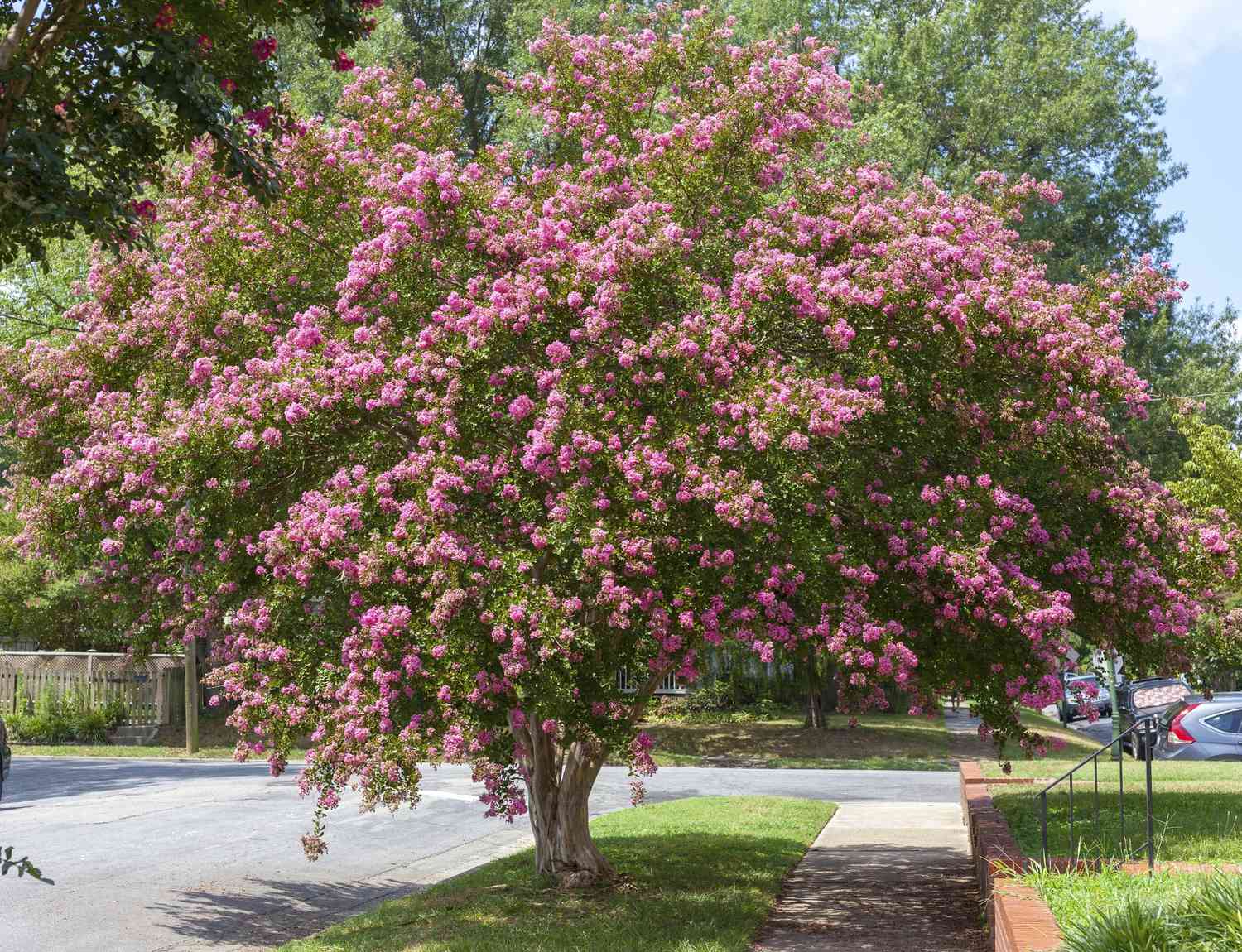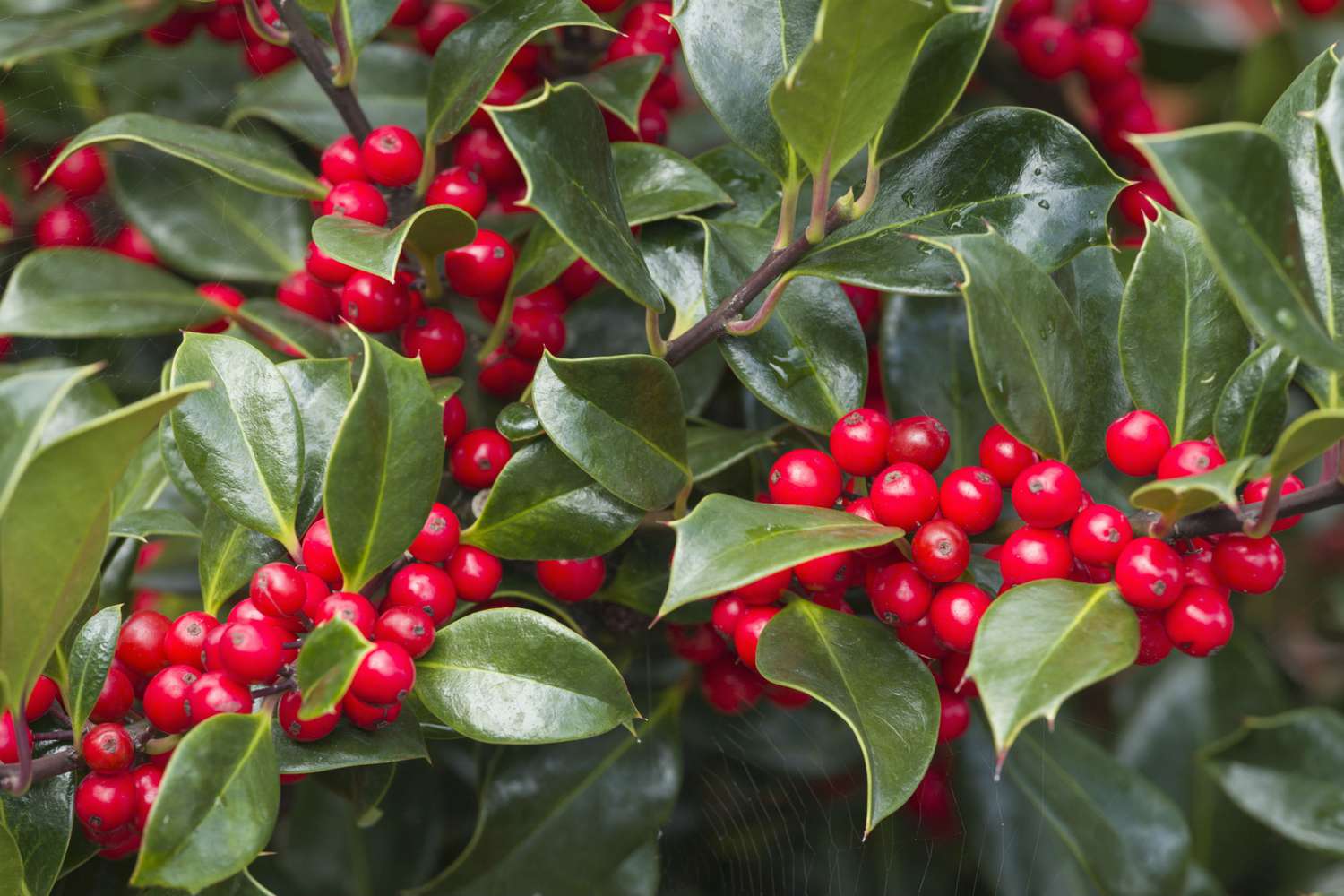Home>Gardening Tips and Tricks>Problem Solving>When Should You Prune Trees
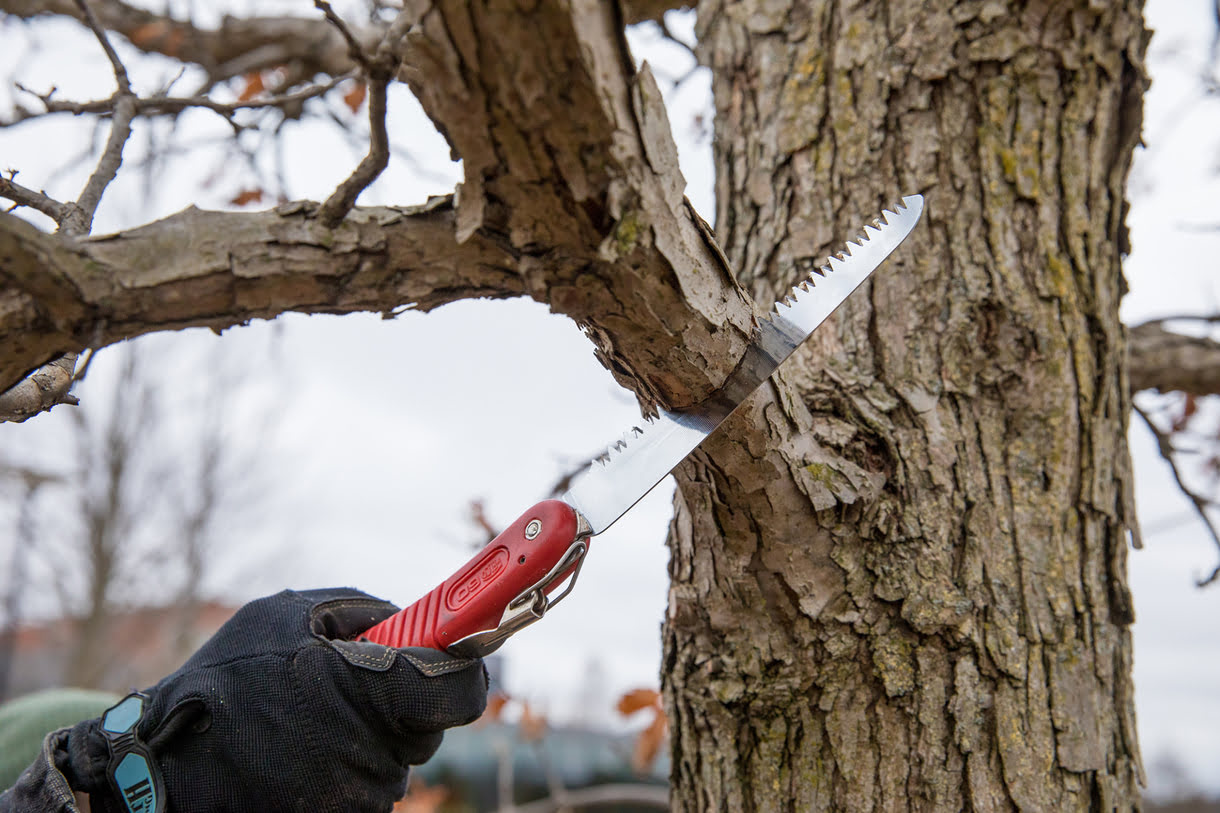

Problem Solving
When Should You Prune Trees
Modified: January 22, 2024
Learn the best time for tree pruning and problem-solving techniques to ensure healthy tree growth and longevity. Expert tips and advice for proper tree care.
(Many of the links in this article redirect to a specific reviewed product. Your purchase of these products through affiliate links helps to generate commission for Chicagolandgardening.com, at no extra cost. Learn more)
Table of Contents
Introduction
Pruning trees is an essential element of proper tree care and maintenance. It involves selectively removing certain branches or parts of a tree to improve its health, appearance, and safety. Pruning not only enhances the overall aesthetics of a tree, but it also ensures that it grows properly and thrives in its environment. However, knowing when and how to prune trees can be a challenging task for many homeowners and garden enthusiasts.
Understanding the purpose and benefits of tree pruning is crucial in determining the appropriate time and method to prune. Proper pruning ensures that trees are healthy, strong, and structurally sound. By removing dead or diseased branches, pruning promotes new growth and reduces the risk of falling branches that can cause property damage or injury. Additionally, pruning can shape a tree, encourage flowering, and improve air circulation, allowing sunlight to penetrate the canopy and reach the lower branches.
Several factors should be considered before pruning trees. It is essential to evaluate the type of tree, its age, condition, and the desired outcome of pruning. Furthermore, understanding the tree’s natural growth cycle and the specific characteristics of each season can greatly influence the timing and approach to pruning.
In this article, we will explore the different seasons and when they are ideal for pruning trees. We will also discuss the signs that indicate when it’s time to prune and the necessary tools and techniques for successful pruning. Whether you’re a homeowner with a few trees in your backyard or a professional arborist, this comprehensive guide will provide you with invaluable information to make informed decisions regarding tree pruning.
The Purpose of Tree Pruning
Tree pruning serves various purposes and plays a vital role in maintaining the health and aesthetics of trees. Let’s delve into the key reasons why pruning is important:
- Promoting Tree Health: Pruning helps remove dead, damaged, or diseased branches, preventing the spread of infections and diseases to the rest of the tree. By eliminating these weakened parts, the tree can focus its resources on healthy growth, boosting overall vitality.
- Enhancing Tree Appearance: Pruning can significantly improve the visual appeal of a tree. By removing overgrown or crowded branches, the tree’s natural shape and structure can be accentuated, leading to a more pleasing and balanced appearance.
- Increasing Safety: Especially in urban or suburban areas, overgrown trees can pose potential hazards. Pruning reduces the risk of falling branches or limbs that can cause accidents, property damage, or power outages during storms or high winds.
- Encouraging Fruit Production: Fruit trees require proper pruning to stimulate flower and fruit formation. By selectively removing certain branches, sunlight can penetrate the canopy more effectively, resulting in improved fruit quality and increased yields.
- Promoting Air Circulation and Light Penetration: Pruning helps create an open canopy that allows light and air to reach the inner parts of the tree. This promotes healthy foliage growth, reduces the risk of fungal diseases, and improves overall tree vigor.
Overall, the purpose of tree pruning is to maintain and enhance the health, structure, and aesthetics of trees. Proper pruning techniques not only address existing issues but also prevent future problems from arising. By understanding the goals of pruning, we can make informed decisions about when, where, and how to prune our trees effectively.
Benefits of Pruning Trees
Pruning trees offers a wide range of benefits that contribute to their overall health and longevity. Let’s explore the key advantages of pruning:
- Promotes Tree Growth: Regular pruning stimulates new growth by removing dead, damaged, or diseased branches. This helps redirect the tree’s energy towards healthy branches and encourages the development of a stronger and more robust structure.
- Enhances Aesthetics: Pruning plays a significant role in shaping and improving the appearance of trees. By selectively removing branches, we can create a visually appealing tree canopy, accentuating its natural form and symmetry.
- Improves Air Circulation: Proper pruning opens up the tree canopy, allowing air to flow freely through the branches. This reduces the risk of fungal diseases and promotes better overall tree health.
- Increases Sunlight Exposure: Pruning helps to expose the inner branches of a tree to sunlight. This is particularly beneficial for dense trees or those growing in shade, as increased sunlight penetration fosters better photosynthesis and promotes healthier foliage growth.
- Reduces Hazards: Pruning removes dead or weak branches that can pose potential risks. By eliminating these hazards, we can minimize the chances of falling branches and reduce the risk of property damage and personal injuries.
- Improves Fruit Production: Fruit trees require proper pruning for optimal fruit production. By selectively removing branches, we can improve air circulation, increase sunlight exposure, and enhance the tree’s ability to produce high-quality fruits.
- Controls Size and Spread: Pruning enables us to manage the size and spread of a tree. Through careful branch removal, we can prevent trees from interfering with power lines, structures, or neighboring properties.
In summary, pruning trees provides numerous benefits, including improved growth, enhanced aesthetics, better air circulation, increased sunlight exposure, reduced hazards, improved fruit production, and controlled size and spread. By utilizing appropriate pruning techniques, we can help our trees flourish and maintain a safe and beautiful landscape.
Factors to Consider Before Pruning
Before diving into the process of pruning trees, there are several important factors to consider. These factors will help you determine the appropriate timing, method, and extent of pruning for your trees. Let’s explore these factors in detail:
- Type of Tree: Different tree species have varying growth habits, pruning requirements, and tolerances. Understanding the specific characteristics of the tree you plan to prune is crucial in determining the correct approach.
- Tree Age and Condition: Younger trees have different pruning needs compared to mature trees. Consider the age and overall health of the tree before pruning. Older trees may require more precise and cautious pruning to avoid compromising their structural stability.
- Desired Outcome: Clarify your pruning goals. Are you aiming to improve tree structure, enhance aesthetics, reduce hazards, or promote fruit production? Knowing your desired outcome will help guide your pruning decisions.
- Growth Cycle: Understanding the natural growth cycle of the tree is essential in determining the best time for pruning. Some trees are best pruned during dormancy, while others benefit from pruning during specific seasons.
- Weather Conditions: Extreme weather conditions, such as high winds, heavy rain, or freezing temperatures, can affect the success of pruning. Avoid pruning during these periods to minimize stress on the tree and ensure proper healing of pruning wounds.
- Local Regulations: Check with local authorities or consult an arborist to understand any regulations or permits required for tree pruning in your area. Some municipalities have guidelines to protect tree health and prevent improper pruning practices.
- Expertise and Safety: Assess your own skill level and the complexity of the pruning task. If the tree is large or the branches are high, consider hiring a professional arborist to safely and effectively prune the tree.
Considering these factors before pruning will help you make informed decisions and ensure the long-term health and beauty of your trees. If you have any uncertainties or concerns, don’t hesitate to seek advice from a certified arborist who can provide professional guidance specific to your tree’s needs.
Winter Pruning
Winter is an ideal time for pruning certain tree species. Pruning during the dormant season offers several benefits and can be advantageous for both the tree and the pruner. Let’s explore the advantages and considerations of winter pruning:
Benefits of Winter Pruning:
- Visibility: Without leaves on the tree, the structure and branching patterns are more visible in winter. This makes it easier to identify dead, diseased, or crossing branches that need to be removed.
- Disease and Insect Management: Many diseases and insects are less active or dormant during the winter months. Pruning in winter reduces the risk of spreading or introducing pathogens or pests through pruning cuts.
- Promotes Spring Growth: Pruning in winter stimulates the growth of new shoots in the spring. By strategically removing branches, you can direct the tree’s energy towards the development of healthy and well-spaced branches.
- Reduces Risk of Pathogen Spread: Pruning during winter, when sap flow is minimal, helps minimize the risk of pathogens entering fresh pruning cuts. This reduces the chances of tree infections or complications caused by fungus or bacteria.
Considerations for Winter Pruning:
- Frost or Extreme Cold: Avoid pruning during periods of severe frost or extreme cold, as this can cause damage to the tree tissue and delay healing. Prune on milder days when temperatures are above freezing.
- Avoid Pruning Flowering Trees: Winter pruning may remove flower buds on trees that bloom in early spring. It’s best to wait until after flowering for pruning these specific tree species to enjoy their full floral display.
- Tree Species: Not all trees are suitable for winter pruning. Some species, such as maple or birch, may bleed sap excessively if pruned too early in winter. Consult a professional arborist to determine the best pruning time for specific tree species.
- Pruning Goals: Consider your pruning goals before deciding to prune in winter. If your main objective is to shape the tree or improve aesthetics, you may opt to prune during other seasons when the tree’s form is more apparent.
Winter pruning can be an effective practice for promoting tree health and structure. However, it’s important to assess the specific needs of the tree and take proper precautions to ensure successful pruning. Consulting an arborist or conducting research on the appropriate timing for pruning specific tree species can help you make the best decision for winter pruning.
Spring Pruning
Spring is a crucial time for tree pruning, as it allows for necessary maintenance and prepares the tree for a season of active growth. Pruning in spring offers numerous benefits and helps promote healthy and flourishing trees. Let’s explore the advantages and considerations of spring pruning:
Benefits of Spring Pruning:
- Stimulates Growth: Spring pruning encourages new growth and development by removing dormant buds. This promotes the production of fresh shoots and leaves, leading to a fuller and healthier tree canopy.
- Corrective Pruning: Spring is an excellent time to address any issues observed during the winter, such as damage from ice or snow accumulation. Pruning can help repair and shape the tree, correcting structural imbalances and promoting proper growth.
- Removes Winter Damage: Spring pruning allows for the removal of any dead, broken, or damaged branches caused by harsh winter conditions. Removing these weak or unsightly branches enhances the tree’s appearance and prevents potential hazards.
- Prevents Disease Spread: By pruning in spring, you can remove any diseased or infected branches before pathogens have a chance to spread. It minimizes the risk of disease transmission and promotes the overall health of the tree.
- Encourages Fruit Production: Pruning fruit trees in spring helps manage their size, shape, and overall productivity. It allows for proper sunlight exposure to the fruitful branches, leading to improved flowering and ultimately, a bountiful harvest.
Considerations for Spring Pruning:
- Timing: It’s important to wait until the tree has fully emerged from winter dormancy before pruning in spring. Pruning too early can disrupt the tree’s natural growth cycle and impact its ability to heal properly.
- Avoid Flowering Trees: If you have flowering trees, it’s best to wait until after their bloom to prune. Pruning before flowering can result in the removal of flower buds, diminishing the tree’s potential for a vibrant floral display.
- Size and Complexity: If you have large or complex pruning tasks, it’s advisable to seek the assistance of a professional arborist. They have the necessary equipment, knowledge, and experience to safely and effectively prune larger trees.
- Specific Tree Needs: Different tree species may have specific pruning requirements or preferences. Research or consult with an expert to understand the specific needs of your trees to ensure appropriate pruning practices.
Spring pruning offers an opportunity for corrective action, growth stimulation, and overall tree improvement. By considering the timing, specific needs of your tree species, and utilizing proper pruning techniques, you can promote the health and vitality of your trees throughout the growing season.
Summer Pruning
Summer is a time of active growth for trees, making it an ideal season for maintenance and selective pruning. While summer pruning may not be as common as other seasons, there are specific situations where it can be beneficial. Let’s explore the advantages and considerations of summer pruning:
Benefits of Summer Pruning:
- Controlling Size and Shape: Pruning in summer allows for the control of excessive growth, especially for fast-growing trees or those that have outgrown their allotted space. By selectively removing branches, you can maintain a desired size or shape for the tree.
- Directing Energy: Summer pruning can redirect the tree’s energy to specific areas, optimizing growth and strengthening desired branches. By removing unwanted or competing branches, you can encourage more vigorous growth in targeted areas.
- Removing Water Sprouts or Suckers: Summer is an excellent time to remove water sprouts (vigorous vertical shoots) or root suckers (shoots emerging from the tree’s base). These growths can redirect nutrients and energy away from the main branches and should be promptly pruned.
- Thinning the Canopy: Summer pruning can thin out the tree’s canopy, allowing for better air circulation and light penetration. This reduces the risk of fungal diseases and improves overall tree health.
- Deadheading and Maintenance: Summer pruning can involve deadheading, which is the removal of spent flowers or seed heads. This encourages the tree to redirect energy towards further growth or bud development.
Considerations for Summer Pruning:
- Timing: It’s important to avoid pruning during the hottest parts of the day, as this can stress the tree. Aim to prune in early morning or late evening when temperatures are cooler, and the tree is less likely to experience dehydration or sunburn.
- Watering and Hydration: Ensure that the tree is adequately hydrated before and after pruning. Proper watering before pruning helps minimize stress and assists in post-pruning recovery.
- Limits for Certain Trees: Some trees, particularly those with a heavy sap flow during summer, should be pruned with caution. Examples include birch, maple, and oak trees. If pruning such trees, consult an arborist for the best timing and techniques.
- Professional Assistance: If you have large or complex pruning tasks, or are unsure about the proper techniques, seeking the help of a professional arborist is recommended. They have the knowledge, experience, and equipment to perform summer pruning effectively and safely.
While summer pruning may not be as widespread as other seasons, it can provide an opportunity to address size control, redirect energy, and perform necessary maintenance. With proper timing, techniques, and consideration of tree-specific needs, summer pruning can contribute to the overall health and appearance of your trees.
Fall Pruning
Fall is a transitional season when trees start preparing for dormancy. While fall pruning is not as common as other seasons, there are certain situations where it can be beneficial. Understanding the advantages and considerations of fall pruning will help you make informed decisions for your trees. Let’s explore the benefits and considerations of fall pruning:
Benefits of Fall Pruning:
- Clearing Dead and Diseased Wood: Fall is an opportune time to identify and remove dead or diseased branches before winter sets in. Removing these branches helps prevent the spread of diseases or pests and promotes overall tree health.
- Shape and Structure: Fall pruning allows for the correction of any structural flaws or shape issues. By selectively removing branches, you can improve the tree’s overall form and ensure proper growth in the upcoming seasons.
- Promoting Air Circulation: Thinning out the canopy through fall pruning improves air circulation, reducing the risk of fungal diseases that thrive in stagnant or moist conditions.
- Preparing for Winter: Pruning in fall reduces the risk of damage caused by snow or ice accumulation on overgrown branches. By removing weak or crossing branches, you minimize the chance of breakage and potential hazards during winter storms.
- Mitigating Pest Concerns: Pruning in fall can directly address pest concerns, such as removing branches where pests may overwinter or removing infected branches to reduce pest populations.
Considerations for Fall Pruning:
- Timing: It’s crucial to time fall pruning correctly to allow the tree enough time to heal before the onset of winter. Prune early enough in the season to avoid colder temperatures and ensure proper healing.
- Leaf Disease Management: Be cautious of pruning trees affected by leaf diseases, as fall pruning may spread diseases further. Assess the severity of the disease and consult with an arborist to determine the best course of action.
- Tree Preference: Not all trees respond well to fall pruning. Some species may experience excessive sap bleeding or slower healing. Research the specific needs of your tree species or consult an arborist for guidance.
- Professional Assistance: If you have extensive or complex pruning needs, it may be beneficial to hire a professional arborist. They have the expertise and knowledge to assess the tree’s health and perform proper fall pruning techniques.
While fall pruning is not necessary for all trees, it can provide opportunities to address specific concerns and prepare trees for the dormant season. By understanding the benefits and considering the appropriate timing and tree preferences, you can make informed decisions to promote the long-term health and vitality of your trees.
Signs That Indicate It’s Time to Prune
Knowing when to prune your trees is essential for their health and proper growth. While the timing may vary depending on the tree species and specific circumstances, there are several signs that indicate it’s the right time to prune. Let’s explore these signs:
- Dead Branches: Dead branches are a clear indication that pruning is necessary. They not only affect the overall appearance of the tree but can also be hazardous if they fall. Prune dead branches promptly to maintain tree health and safety.
- Diseased Branches: If you notice branches affected by diseases or infections, pruning may be necessary. Removing diseased branches helps prevent the spread of pathogens and allows the tree to redirect its resources to healthy areas.
- Overgrown Branches: When branches become overgrown and crowd the tree canopy, pruning is necessary to maintain proper airflow and light penetration. Thinning out excess branches improves the tree’s overall health and structure.
- Crossing or Rubbing Branches: Crossing or rubbing branches can cause injury to the tree and create entry points for diseases and pests. Pruning these branches removes the potential sources of damage and promotes healthier growth.
- Weak Branch Attachments: Branches with weak attachments to the trunk or main branches are prone to breakage, especially during storms. Pruning these weak branches helps prevent accidents and improves the structural integrity of the tree.
- Branches Obstructing Structures: If tree branches are obstructing buildings, power lines, or other structures, pruning is necessary to ensure safety and prevent damage. Trimming these branches helps maintain clearance and prevents potential hazards.
- Uneven Growth: When a tree exhibits uneven growth or branches that are significantly longer or thicker than others, pruning can help balance the tree’s shape and promote even growth throughout.
- Water Sprouts or Suckers: Excessive water sprouts or suckers that emerge from the tree trunk or base require pruning to redirect energy to more desirable branches. This helps maintain a healthier and more aesthetically pleasing tree form.
While these signs indicate the need for pruning, it’s important to assess the specific needs of your tree and its growth patterns. Regular tree inspections and consultations with a certified arborist can provide guidance on when and how to prune your trees effectively.
Tools and Techniques for Pruning
Pruning trees requires the use of appropriate tools and techniques to ensure effective and safe results. Understanding the right tools and employing proper pruning techniques will help you achieve the desired outcome while maintaining the health of your trees. Let’s explore the essential tools and techniques for pruning:
Pruning Tools:
- Pruning Shears: Also known as hand pruners or secateurs, pruning shears are ideal for cutting small branches and stems that are less than 1 inch in diameter. Choose bypass pruners for clean cuts, especially when working with live branches.
- Lopping Shears: Lopping shears, with their long handles, are designed to cut thicker branches, typically between 1 and 2 inches in diameter. They provide extra leverage and reach for pruning higher branches.
- Pruning Saws: Pruning saws have a longer, curved blade that allows for cutting larger branches, typically over 2 inches in diameter. Select a pruning saw with a sharp and sturdy blade for efficient and precise cuts.
- Pole Pruners: Pole pruners consist of a pruning saw or lopper attached to an extendable pole. They are suitable for reaching higher branches without the need for a ladder, promoting safer pruning practices.
- Pruning Chisels or Knives: Pruning chisels or knives are handy tools for precise and selective pruning. They are used for tasks such as removing budwood or making detailed cuts.
- Tree Pruning Sealant: While not always necessary, tree pruning sealant can be used to seal larger pruning wounds. It helps prevent disease infiltration and promotes faster healing.
Pruning Techniques:
- Proper Cuts: Make clean cuts just outside the branch collar, avoiding leaving stubs or cutting too close to the trunk. Stub cuts may not heal properly, and cutting into the branch collar can disrupt the tree’s natural healing process.
- Remove Dead or Diseased Wood: Start by removing dead or diseased branches, making cuts back to healthy wood. This helps prevent the spread of diseases and ensures the integrity and health of the tree.
- Thinning and Shaping: Thin out crowded branches by selectively removing crossing, rubbing, or weak branches. Aim to maintain a well-balanced and open canopy for optimal airflow and light penetration.
- Heading Back: Heading back involves selectively pruning the tips of branches to promote bushier growth or control the size of the tree. Make cuts just above a healthy bud or branch.
- Assess Branch Angles: Look for narrow branch angles or co-dominant stems that can lead to structural weakness. Remove or reduce these branches to minimize the risk of breakage.
When pruning, always ensure your tools are sharp, clean, and properly maintained. This enhances cutting efficiency and reduces the risk of disease transmission. Additionally, consider the timing and specific needs of your trees, as different species may have different pruning requirements.
If you are unsure about the proper techniques or are dealing with larger pruning tasks, it’s recommended to consult a professional arborist. They can provide expert advice, ensure the health of your trees, and perform pruning safely and effectively.
Conclusion
Pruning trees is a vital aspect of tree care and maintenance, providing numerous benefits for both the health and aesthetics of the tree. By understanding the purpose, benefits, and factors to consider before pruning, you can make informed decisions about when and how to prune your trees effectively. Each season offers unique opportunities for pruning, with winter being ideal for visibility and disease management, spring for corrective pruning and stimulating growth, summer for controlling size and redirecting energy, and fall for clearing deadwood and preparing for winter.
Recognizing the signs that indicate it’s time to prune, such as dead branches, disease, or overgrown growth, is crucial for proactive tree care. By using the right tools and techniques, including pruning shears, saws, and proper cutting methods, you can achieve desired outcomes while preserving the health of your trees. Ensure you have a clear understanding of your tree’s specific needs, as different species may have different preferences and ideal timing for pruning.
Pruning trees can be a complex task, and if you are unsure or have extensive pruning needs, it is recommended to consult a professional arborist. They possess the expertise and knowledge to assess tree health, perform proper pruning techniques, and maintain the safety and well-being of your trees.
Remember, proper pruning practices contribute to the longevity, beauty, and overall health of your trees. Regularly inspect your trees, assess their needs, and engage in pruning practices that align with the specific requirements of each tree. By doing so, you can ensure that your trees thrive and enhance the beauty of your landscape for years to come.




